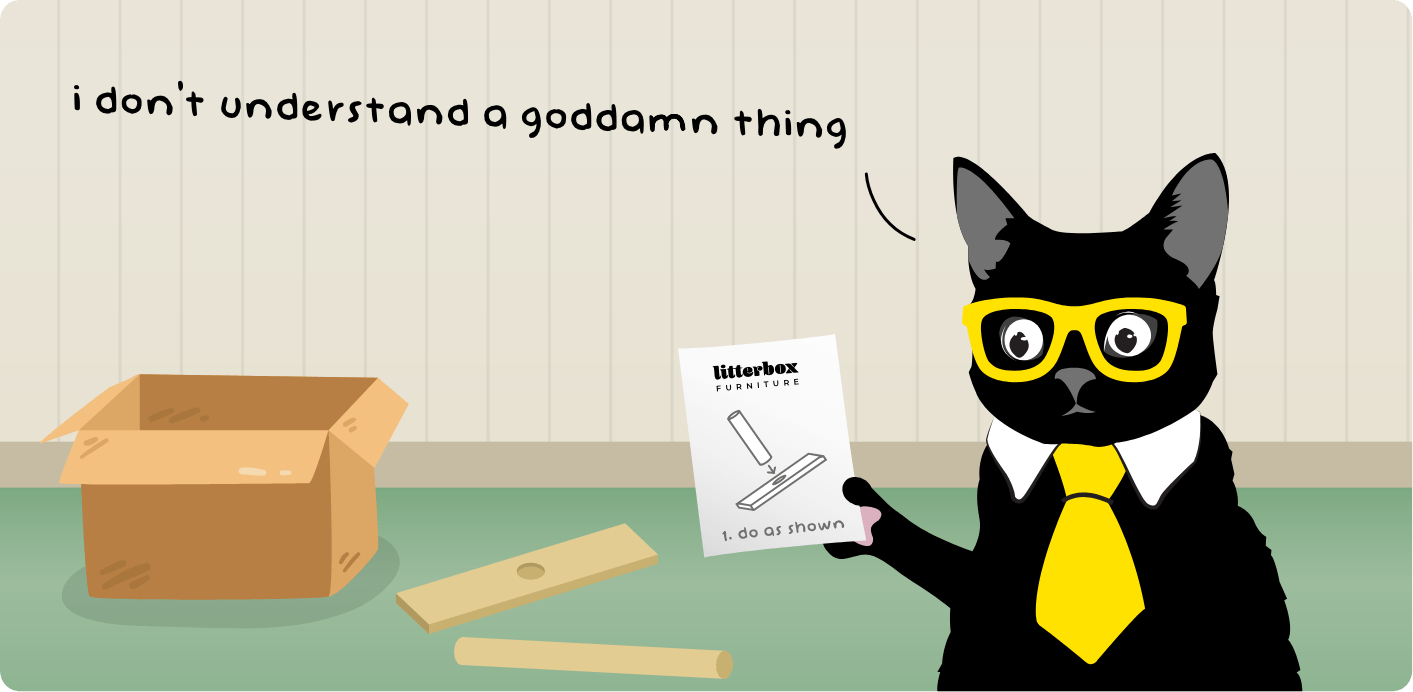Cutting costs has a terrible reputation.
It’s associated with layoffs and understaffed support teams, a way to sacrifice quality, and neglect customers and employees in one fell swoop.
But there are smarter ways to reduce costs and better metrics to work with. One of those is the cost per ticket.
In this article, we’ll break down the cost per ticket, what it is, how to calculate it, and how to make it work for you.
What is cost per ticket?
Cost per ticket is the average cost incurred by a company to resolve a single customer support ticket.
Cost metrics like this one can be very valuable. They enable you to measure the financial impact of your customer support processes and operations — and the impact of any initiatives you undertake to improve it.
But like all customer service metrics — especially cost-related ones — it can be used in a way that’s harmful to your organization and your team, so you have to use it appropriately.
The average cost per support ticket is usually slightly different depending on the channels you support. In 2021, research by MetricNet broke it down to:
- Phone: $17.19
- Chat: $15.72
- Email: $16.13
The overall average doesn’t say much without context, though. The ranges for each channel were huge:
- Phone support ranges from $7 to $41 per ticket.
- Chat support ranges from $6 to $36.
- And email from $6 to $32.
Cost per ticket isn’t the best metric for customer service benchmarking unless you can find industry-specific numbers.

How to calculate cost per support ticket?
An average cost per support ticket is a straightforward metric to calculate.
The formula is:
Cost per ticket = Total customer support costs / Total number of support tickets
For instance, if your entire support operation costs $80,000 per month and you’re handling 5000 support tickets, then your cost per ticket would be ($80,000 / 5000) = $16 per ticket.
As a metric, cost per ticket tends to give a complete picture only when all costs are counted. That would include:
- Service desk agents’ salaries and benefits of the support team.
- Costs of customer support tools and software (e.g., helpdesk software, communication platforms).
- Training and development expenses.
- Infrastructure costs (e.g., equipment, office space).
- Any additional expenses related to providing support.
All of these factors contribute to your cost per ticket. The more you invest in your customer service team, the higher it will be.
Say you cap the number of agents that report to one manager at eight and therefore have a lower ratio of agents to managers. That will increase your cost per ticket because your management costs go up.
Or say you increase your spending on customer service training and development. The cost per ticket will go up again. But if that training leads to a more efficient team that’s capable of handling more tickets and prevents you from needing to hire again, the cost per ticket may go down in the long run.
That isn’t to say those investments aren’t worth it or don’t result in long-term improvements to your support organization. It’s just one of the limitations of using cost per ticket as a key performance indicator (KPI) — we’ll discuss more limitations later on.

Why you should measure cost per support ticket?
Measuring cost per ticket gives you a much deeper understanding of where your customer service team is when it comes to your financial expenses.
You likely already know the total service desk cost incurred by your team. Tracking your total cost and how that develops over time is a good idea — even if it usually tells you the obvious. Say your team is growing, your operating costs will obviously go up. And if you start using shiny, new, and expensive software, that will also push them up.
Cost per support ticket gives you an additional layer of context because it shows how your costs are developing in relation to your ticket volume.
- If your ticket volume has grown proportionately with your team, your cost per ticket will stay stable, which is a good sign.
- Maybe your software enables your existing team to get more tickets resolved. Even if total costs have increased, the cost per ticket will be stable, which suggests you’re scaling in the right direction.
You can use your cost per support ticket for:
- Financial efficiency. If both total costs and your cost per ticket increase, then you’d want to see major improvements in customer satisfaction or your customer experience. Otherwise, your customer service team is becoming more expensive and less efficient.
- Resource allocation. By identifying which support areas require more resources and attention, you can invest more in finding long-term solutions to make those areas work a little better.
- Budget planning. Tracking how your cost per ticket is developing can make it easier to set a more realistic budget for your team.
- ROI analysis. Calculating a Return on Investment is easiest with your total cost. Still, another circumstance that might justify a high or growing cost per ticket is if your ROI goes up or stays the same.

The limitations of cost per ticket
80% of companies believe that they provide a superior customer experience. And yet, only 8% of companies deliver one.
The delivery gap is real.
Do you know what often doesn’t help provide excellent customer service? An unhealthy obsession with reducing costs.
These are some of the risks of working with cost per ticket:
- Lower support quality. The cost per support ticket doesn’t give a full picture of customer service quality. A higher cost per ticket that leads to a happier and more loyal customer is worth it. Compromising on experience to save costs will have a negative impact down the road.
- Neglecting the bigger picture. Many support strategies might result in a higher cost per ticket. A great self-service strategy effective at ticket deflection could increase your cost per support ticket because your customers stop contacting you over issues that are easy to solve.
- Focus on short-term goals. It’s tempting to prioritize quick fixes so you can immediately see an impact on your finances. But that results in neglecting long-term strategies that will im-purrr-ove your support in the long term.
- Impact on employee well-being. One of the biggest challenges of setting goals based on KPIs is managing the impact of that on your team. Considering breaking down the cost per ticket per employee? That’s a surefire way to agent burnout, increased stress, and reduced job satisfaction — which will ruin team morale and performance.
The point is to treat each conversation with a customer as an opportunity. Every cost has to be weighed against the potential gain.
If you invest in a method like support-driven growth, your cost will, of course, go up. You’ll expect your frontline agents to deliver value in every interaction, leading to reduced churn, increased loyalty, and higher customer satisfaction. That takes time, and time is money.
This metric works much better as part of a holistic set of KPIs to measure your customer support. It can be one of many priorities but should not be the only goal.

Four tactics to decrease cost per support ticket
Keeping track of your operating costs is a great way to ensure your business stays in good shape.
Many industries are already struggling economically. There’s a lot you can do to prepare for that and enable your team to get through it. Decreasing your cost per ticket as part of that strategy is only logical.
These are four of the most effective tactics:
- Implement automation tools.
- Increase First Contact Resolution (FCR).
- Decrease Average Handle Time (AHT).
- Invest in quality assurance (QA).
1. Implement automation tools
One way to reduce your cost per ticket is automation. This could be:
- A chatbot as one of the self-service options.
- Automatic macro suggestions based on the content of a ticket.
- Ticket routing that identifies simple and repetitive issues quickly.
- Automatic ticket categorization.
- Automated quality management.
- Proactive alerts and notifications that deflect tickets by enabling you to respond before someone thinks of reaching out.
Each of these enables your support agents to solve tickets faster, which should result in a lower cost per ticket. Of course, if you’re paying for a new tool to enable automation & AI you’ll need to factor that into the equation.
2. Increase First Contact Resolution (FCR)
FCR is not only effective when it comes to reducing costs. Improving FCR will also cut your resolution time and improve customer experience.
The goal is to minimize the need for follow-ups. A simple way to start might look like this:
- Look at every process you have that requires a follow-up from the customer.
- Go through all tickets that have more than one agent reply.
- Categorize these to see how many of those could’ve been prevented with a better process, better self-service, or higher support quality.
- Start making improvements based on the results.
By decreasing FCR, you’re enabling your existing team to handle more tickets (since they’ll be spending less time on follow-up) — which means your cost per ticket will go down.

3. Decrease Average Handling Time
If you’re successful at implementing automation tools and increasing your FCR, you’ll naturally see a decrease in average handling time as well.
73% of customers say valuing their time is the most important thing a company can do to provide them with good online service. This is another tactic that doesn’t just reduce your cost per ticket — it also massively improves your customer experience as a whole.
4. Invest in quality assurance
A successful QA program can have the biggest impact on reducing cost per ticket.
QA can sometimes feel like a superfluous cost — something that makes your entire operation more expensive and introduces redundancy into your system.
That’s the wrong mindset. QA might feel costly in the short term, but it can dramatically reduce costs in the long run by leading to:
- Better agent training. QA identifies any knowledge gaps and any opportunities to upskill your team.
- Higher FCR. Those cases that could’ve been solved in one reply with a better response? These can be improved with a feedback process that shows your agents how.
- Fewer escalations. Improving your quality can reduce the number of customer escalations your team has to handle — which are usually a big driver of cost.
- Fewer repeat contacts. A QA process can empower your team to address root causes by showing them where the recurring issues are.
- Increased agent productivity. Actionable feedback and continuous improvement will help your agents develop and improve their performance, in a way that’s tailored to their interests.
Cost per support ticket is a diagnostic tool
The cost per ticket is one piece of a much larger puzzle.
It’s easy to focus on the costs that you can see. Optimizing how much you’re spending is a meaningful goal. But it’s important to remember that not all costs are as tangible and easy to measure as cost per ticket might be.
Put simply: Not investing in customer service is never the right answer to reducing costs.
A bad customer experience will damage your reputation, lead to churn, and lose revenue. It hurts your company.
A better approach to managing your customer support costs is to use cost per ticket as a diagnostic metric. It’s not the be-all, end-all. It’s an important metric that helps you prioritize initiatives, and when used properly, the outcome is an efficient and effective support team that your customers will love.



